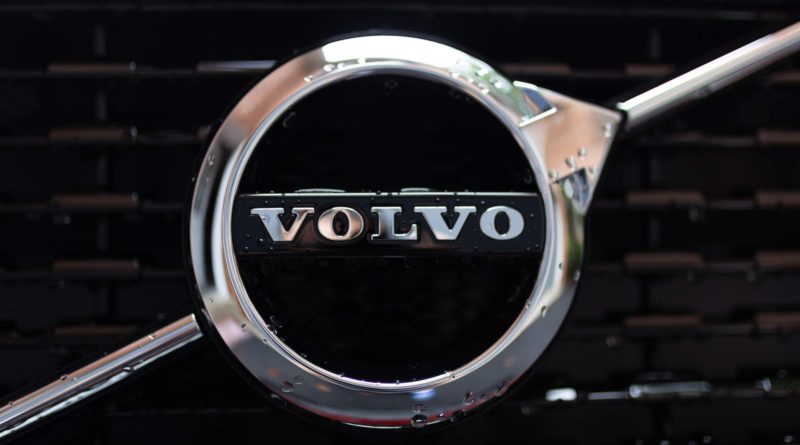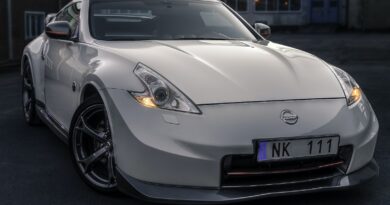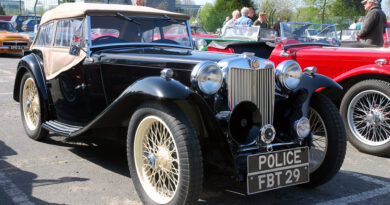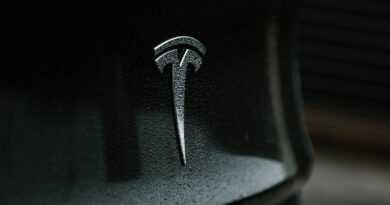The history of Volvo
Although not commonly known or popular in The U.S., Australia or even China, Volvo is considered one of the best manufacturers by Europeans. If you judge it based on sale figures alone, you won’t be impressed, because most other brands manage to outsell it. However, ask any Volvo owner how satisfied and pleased they are with their vehicle, and the majority will have nothing but strong praises. See, there’s a very good reason for it. Volvo’s obsession with safety and reliability shows in their cars, as does the build quality and durability. They sacrificed sale figures to produce safer cars on multiple occasions, knowing full well that the added production cost of making a vehicle as safe as possible will drive final prices higher and in turn attract less people to the brand. You don’t get that from many manufacturers today, let’s put it that much.
 The word Volvo itself in Latin translates to “I roll”. The company founders, Assar Gabrielsson and Gustaf Larsson formed the brand based on safety and quality as their top criteria, and that’s exactly what the first Jakob model offered after the company’s official birth in 1927. They produced closed and open-top (cabriolet) variants of the four-cylinder OV4 and PV4 models, both of which were designed to withstand the cruel, harsh environment that is Sweden. Whereas contemporary imports from the U.S. would fail at a measly -20 degrees, Volvos had no trouble surviving the coldest of winters. The Swedish symbol for iron attached on a diagonal piece on the front grille stood proudly, and it’s a logo Volvos still use to this very day.
The word Volvo itself in Latin translates to “I roll”. The company founders, Assar Gabrielsson and Gustaf Larsson formed the brand based on safety and quality as their top criteria, and that’s exactly what the first Jakob model offered after the company’s official birth in 1927. They produced closed and open-top (cabriolet) variants of the four-cylinder OV4 and PV4 models, both of which were designed to withstand the cruel, harsh environment that is Sweden. Whereas contemporary imports from the U.S. would fail at a measly -20 degrees, Volvos had no trouble surviving the coldest of winters. The Swedish symbol for iron attached on a diagonal piece on the front grille stood proudly, and it’s a logo Volvos still use to this very day.
Two years later, in 1929, they introduced the PV651. It was wider and longer than the compact Jakob, but there was a good reason for it: under the hood a six-cylinder engine supplied more power and torque. The success of the PV651 meant Volvo was able to purchase the engine supplier and open up their very own factory, returning the first dividend to shareholders as early as 1931. For a large car manufacturer, being able to pay off debt so quickly is astonishing.
The first 10,000 examples left the factory by May 1932, with people and Volvo dealers asking the manufacturer to produce cheaper cars for the ordinary people of the middle and lower class. Volvo answered with the 1936 PV 51, a less expensive PV36 which was also smaller and had less equipment. It was successful, but nowhere near as good as its bigger sibling.
 The Second World War affected Volvo just like it did all other manufacturers, grinding production and sales nearly to a halt. Volvo was thankfully able to survive the ordeal and by the autumn of 1944 they released their most significant model to that point, the PV444. It was the first true small car, designed for the common man. Offering American styling in a compact European package, they were so popular Volvo was barely able to produce them fast enough. The PV444, along with the PV544 dominated Volvo’s production lines almost to the late 1960s. More importantly however, they were the first to capture the U.S. market, even if the portion of influence was minimal.
The Second World War affected Volvo just like it did all other manufacturers, grinding production and sales nearly to a halt. Volvo was thankfully able to survive the ordeal and by the autumn of 1944 they released their most significant model to that point, the PV444. It was the first true small car, designed for the common man. Offering American styling in a compact European package, they were so popular Volvo was barely able to produce them fast enough. The PV444, along with the PV544 dominated Volvo’s production lines almost to the late 1960s. More importantly however, they were the first to capture the U.S. market, even if the portion of influence was minimal.
The 1956 Volvo 120, dubbed the Amazon by the people, is one of the most durable cars to this very day, with lots of examples still on the road. The three-point seatbelt as we know and use it today was actually designed by Volvo’s head of safety engineering, Nils Bohlin. He first implemented it in 1959 on the Amazon and the PV544, after which the invention was deemed so necessary that it spread to every model on the planet.
Volvo had an attempt at sports cars with the 1956 P1900, but it didn’t catch on. Four years down the road and attempt number two arrived in the form of the P1800. It proved to be the opposite of the P1900, attracting thousands of fans with its sleek lines, flowing body shape and touring characteristics. You can catch it in “The Saint” TV series starring Roger Moore.
Volvo continued innovating the safety part of the automotive world with firsts such as crumple zones, collapsible steering columns, rear facing child seats, and even the three-way catalytic converter with Lambdasond. The 140 was replaced with the all-new 240 which offered more safety features and a better overall quality. The smaller 340 model joined it in reaching the 4 million cars sold mark by 1970.
Volvo’s new chapter started in 1991 with the Volvo 850. It was the first Volvo to offer front-wheel drive in an executive body, using a traversely-mounted five-cylinder engine. The already existing safety features combined with the confidence and predictability the front-wheel drive layout offered meant it won a lot of independent awards from many magazines and car reviewers.
 Renault and Volvo were all set to merge but technical and financial reasons corrupted the plan in 1993, leaving Volvo just one of the handful of indepdendent car manufacturers. It was a turning point for Volvo yet again, with the introduction of the modern and new S40 and V40 models.
Renault and Volvo were all set to merge but technical and financial reasons corrupted the plan in 1993, leaving Volvo just one of the handful of indepdendent car manufacturers. It was a turning point for Volvo yet again, with the introduction of the modern and new S40 and V40 models.
The C70 coupe joined them later on, as did the S80 executive sedan in 1997. A year later the V70 wagon made an appearance, and one thing all of them had in common was Volvo’s philosophy of safety and reliability. They are still produced to this very day, albeit in more advanced generations with newer designs, engines and interiors. Between 1927 and the start of 2017 Volvo has sold a total of 19,5 million cars.




